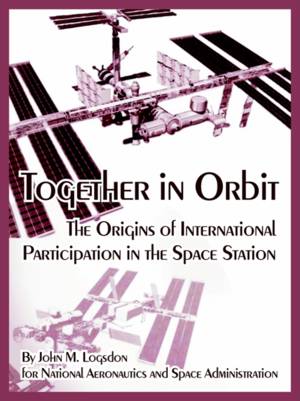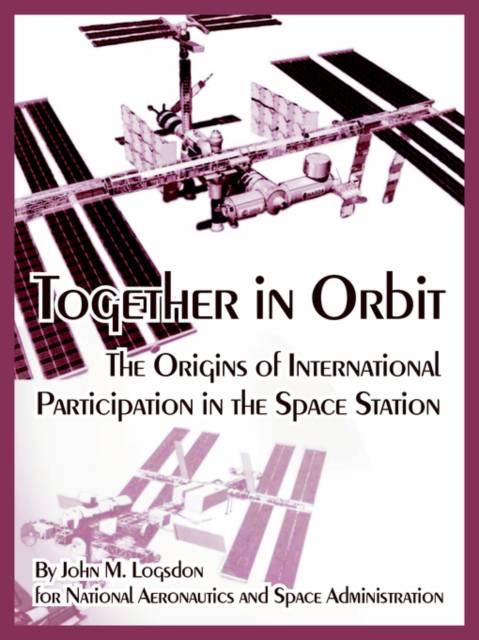
- Retrait gratuit dans votre magasin Club
- 7.000.000 titres dans notre catalogue
- Payer en toute sécurité
- Toujours un magasin près de chez vous
- Retrait gratuit dans votre magasin Club
- 7.000.0000 titres dans notre catalogue
- Payer en toute sécurité
- Toujours un magasin près de chez vous
Together in Orbit
The Origins of International Participation in the Space Station
John M Logsdon, N a S a
33,95 €
+ 67 points
Description
From virtually the beginning of the twentieth century, those interested in the human exploration of space have viewed as central to that endeavor the building of an Earth-orbital space station that would serve as the jumping-off point to the Moon and the planets. Always, space exploration supporters believed, a permanently occupied space station was a necessary outpost in the new frontier of space. The more technically minded recognized that once humans had achieved Earth orbit about 250 miles above the surface---the presumed location of any space station---the vast majority of the atmosphere and the gravity well would have been conquered, and then human beings were about halfway to anywhere they might want to go. Space station advocates also recognized that the scientific and technological challenge of building an Earth-orbital space station was daunting and that pooling the resources of many of the spacefaring nations of the world would maximize the probabilities of success. Thus, when the space station project was born in the in the mid-1980s, it almost immediately became an international program. This monograph describes the process of conceptualizing the international partnership and crafting its contours.
Spécifications
Parties prenantes
- Auteur(s) :
- Editeur:
Contenu
- Nombre de pages :
- 64
- Langue:
- Anglais
- Collection :
- Tome:
- n° 11
Caractéristiques
- EAN:
- 9781410224538
- Date de parution :
- 29-06-05
- Format:
- Livre broché
- Format numérique:
- Trade paperback (VS)
- Dimensions :
- 210 mm x 279 mm
- Poids :
- 167 g

Les avis
Nous publions uniquement les avis qui respectent les conditions requises. Consultez nos conditions pour les avis.






